The spatial distribution of focal stacks within the inner enamel layer of mandibular mouse incisors
- PMID: 33145767
- PMCID: PMC7930765
- DOI: 10.1111/joa.13352
The spatial distribution of focal stacks within the inner enamel layer of mandibular mouse incisors
Abstract
Focal stacks are an alternative spatial arrangement of enamel rods within the inner enamel of mandibular mouse incisors where short rows comprised of 2-45 enamel rods are nestled at the side of much longer rows, both sharing the same rod tilt directed mesially or laterally. The significance of focal stacks to enamel function is unknown, but their high frequency in transverse sections (30% of all rows) suggests that they serve some purpose beyond representing an oddity of enamel development. In this study, we characterized the spatial distribution of focal stacks in random transverse sections relative to different regions of the inner enamel and to different locations across enamel thickness. The curving dentinoenamel junction (DEJ) in transverse sections complicated spatial distribution analyses, and a technique was developed to "unbend" the curving DEJ allowing for more linear quantitative analyses to be carried out. The data indicated that on average there were 36 ± 7 focal stacks located variably within the inner enamel in any given transverse section. Consistent with area distributions, focal stacks were four times more frequent in the lateral region (53%) and twice as frequent in the mesial region (33%) compared to the central region (14%). Focal stacks were equally split by tilt (52% mesial vs. 48% lateral, not significant), but those having a mesial tilt were more frequently encountered in the lateral and central regions (2:1) and those having a lateral tilt were more numerous in the mesial region (1:3). Focal stacks having a mesial tilt were longer on average compared to those having a lateral tilt (7.5 ± 5.6 vs. 5.9 ± 4.0 rods per row, p < 0.01). There was no relationship between the length of a focal stack and its location within the inner enamel. All results were consistent with the notion that focal stacks travel from the DEJ to the outer enamel the same as the longer and decussating companion rows to which they are paired. The spatial distribution of focal stacks within the inner enamel was not spatially random but best fit a null model based on a heterogenous Poisson point process dependent on regional location within the transverse plane of the enamel layer.
Keywords: enamel rods; focal stacks; mouse incisor; quantification; row organization; spatial distribution.
© 2020 The Authors. Journal of Anatomy published by John Wiley & Sons Ltd on behalf of Anatomical Society.
Conflict of interest statement
The authors declare no conflict of interest.
Figures



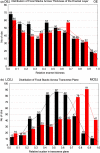

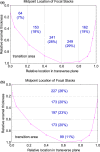

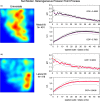
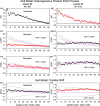
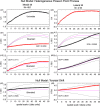
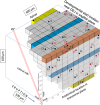
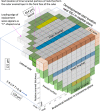
Similar articles
-
Characteristics of the transverse 2D uniserial arrangement of rows of decussating enamel rods in the inner enamel layer of mouse mandibular incisors.J Anat. 2019 Nov;235(5):912-930. doi: 10.1111/joa.13053. Epub 2019 Aug 11. J Anat. 2019. PMID: 31402450 Free PMC article.
-
Quantitative analysis of the core 2D arrangement and distribution of enamel rods in cross-sections of mandibular mouse incisors.J Anat. 2019 Feb;234(2):274-290. doi: 10.1111/joa.12912. Epub 2018 Nov 13. J Anat. 2019. PMID: 30426488 Free PMC article.
-
Morphological characteristics of mouse incisor enamel.J Anat. 1996 Oct;189 ( Pt 2)(Pt 2):325-33. J Anat. 1996. PMID: 8886954 Free PMC article.
-
[Mineralization and structure of enamel (a study using scanning electron microscopy and X-ray micro-analysis of the lower incisor of the albino rat)].Arch Ital Anat Embriol. 1989 Apr-Jun;94(2):97-152. Arch Ital Anat Embriol. 1989. PMID: 2694998 Review. Italian.
-
Multiplane sectioning and scanning electron microscopy as a method for studying the three-dimensional structure of mature dental enamel.Scanning Microsc. 1987 Dec;1(4):1893-902. Scanning Microsc. 1987. PMID: 3324328 Review.
References
-
- Boyde, A. (1989) Enamel. In: Oksche, A. & Vollrath, L. (Eds.) Handbook of microscopic anatomy: teeth. Berlin, Heidelberg: Springer‐Verlag, pp. 309–473.
-
- Burn‐Murdoch, R.A. (1993) The effect of the consistency of the diet on eruption rates and lengths of incisor teeth in rats. Archives of Oral Biology, 38, 699–706. - PubMed
-
- Cartwright, A. , Moss, J. & Cartwright, J. (2011) New statistical methods for investigating submarine pockmarks. Computers & Geosciences, 37, 1595–1601.
-
- Colomb, W. , Osmond, M. , Durfee, C. , Krebs, M.D. & Sarkar, S.K. (2019) Quantification of cellular distribution as Poisson process in 3D matrix using a multiview light‐sheet microscope. Microscopy and Microanalysis, 25, 753–761. - PubMed
-
- Dixon, P.M. (2013) Ripley's K function. Encyclopedia of Environmetrics, 3, 1796–1803.
Publication types
MeSH terms
Grants and funding
LinkOut - more resources
Full Text Sources

